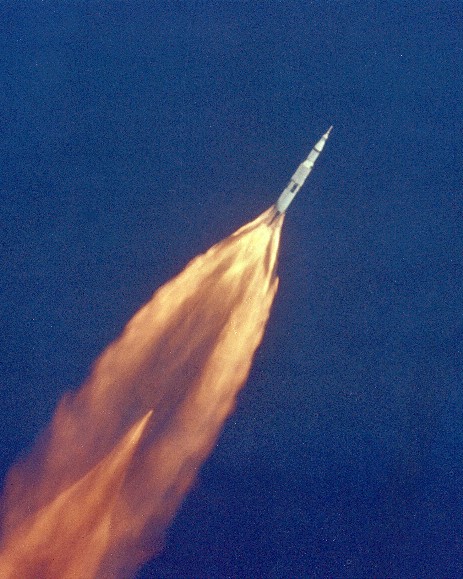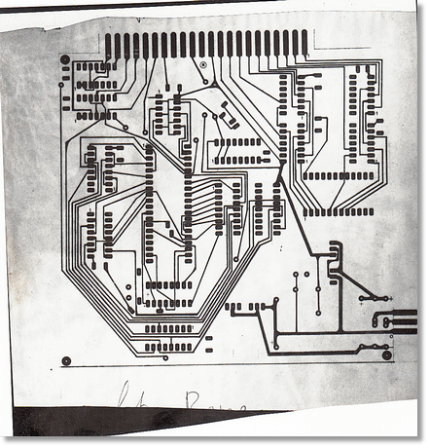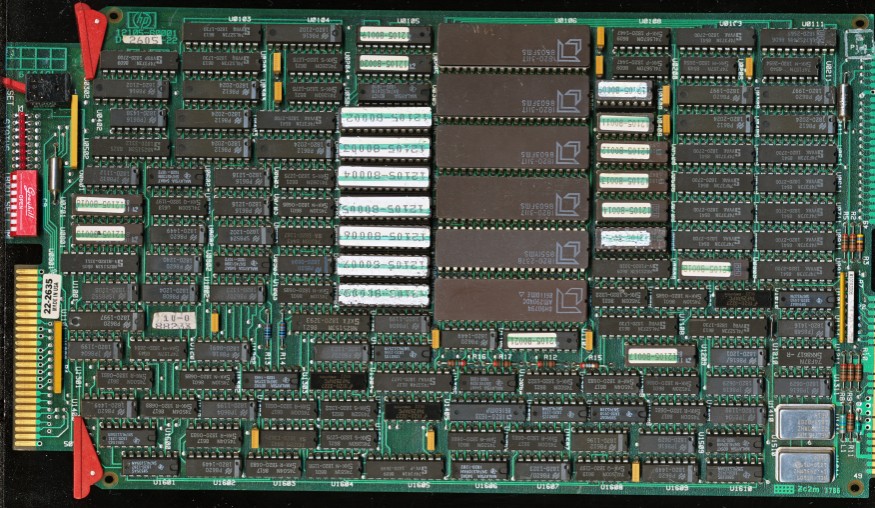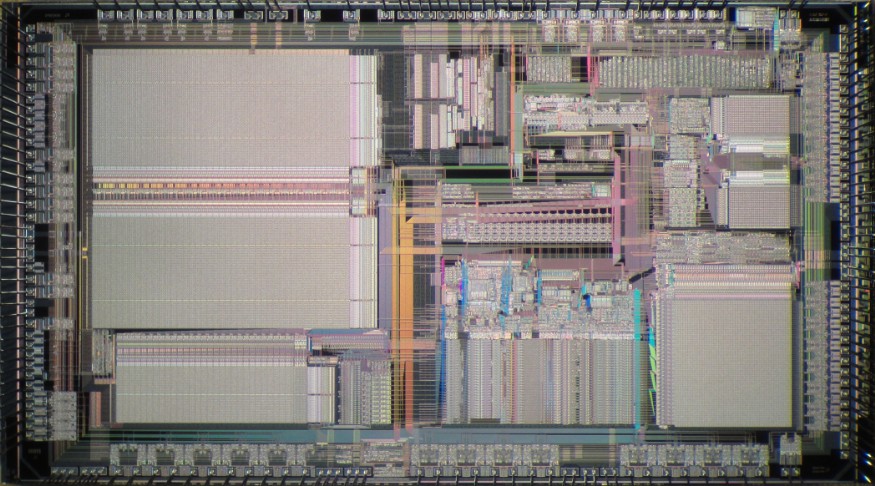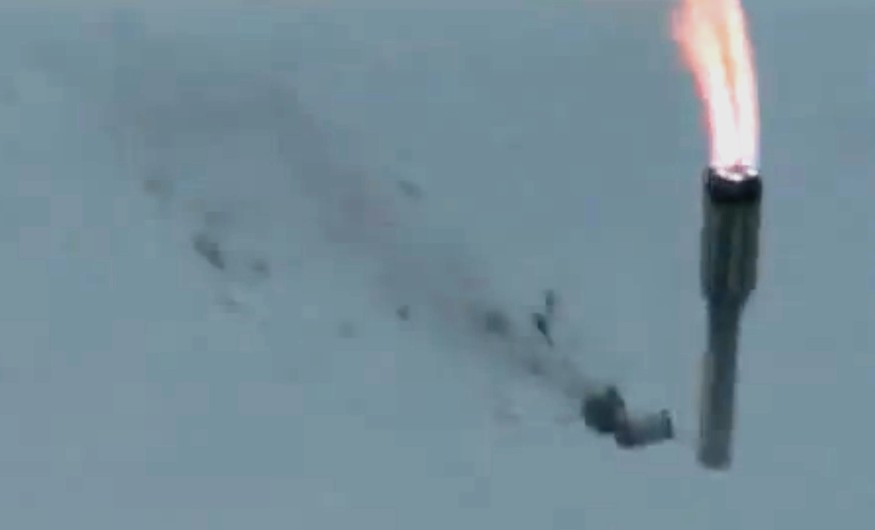
La scelta di progettare un sistema a microprocessore é tipicamente la conseguenza di una richiesta commerciale, desiderosa di disporre di un qualcosa che non trova pronto sul mercato. Talvolta peró ci sono "spinte" assai piú forti che portano il progettista ad osare soluzioni che provino a dare vita ad un sogno impossibile, questo era il mio ...
Dedicato a tutti i pazzi che credono nell’impossibile, come risolvere la complessitá con semplici soluzioni.
Azione e reazione, stimolo e risposta, qualcosa che entra negli ingressi altro che si crea sulle uscite.
Il fascino della continua interazione con una fenomenologia naturale.
Questo è il motivo per cui mi sono avvicinato allo studio dei microprocessori, avere la possibilitá di interagire con gli eventi e governare il comportamento e le funzioni di una macchina.
Il fascino della continua interazione con una fenomenologia naturale.
Questo è il motivo per cui mi sono avvicinato allo studio dei microprocessori, avere la possibilitá di interagire con gli eventi e governare il comportamento e le funzioni di una macchina.

Choosing to design a microprocessor system is typically the result of a commercial request, eager to have something that is not ready on the market. Sometimes, however, there are a lot more "pushes" that lead the designer to dictate solutions that prove to give birth to an impossible dream, this was my ...
Dedicated to all crazy people who believe in the impossible, how to solve complexity with simple solutions.
Action and reaction, stimulation and response, something that enters the other inputs that is created on the outputs.
The fascination of continuous interaction with a natural phenomenology.
That's why I came up with the study of microprocessors, have the ability to interact with events and govern the behavior and functions of a machine.
Ho vissuto la mia adolescenza negli anni sessanta/settanta quando la conquista dello spazio era in pieno sviluppo, avevo infatti 12 anni quando passai tutta la notte del 20 luglio 1969 davanti ad una TV in BN a seguire l'impresa di Neil Armstrong, Buzz Aldrin e Michael Collins. Giá avevo una lunga sequela di passioni e hobby e fu facile aggiungere anche quella per la missilistica.
In questa disciplina si realizzano dei modelli in cui é veramente difficile interagire dinamicamente per controllarne la traiettoria ed in genere il volo, se poi si sceglie di realizzare motori a propulsione liquida invece che solida le difficoltá aumentano in modo esponenziale, ma si sa che piú é difficile e piú e bello! In tutto questo ambito si adottano soluzioni aereodinamiche e di propulsione che potenzialmente cercano di prevenire eventi catastrofici. Nella realtá peró la statisctica dei successi é veramente impietosa ed occorre una grande perseveranza e l'affinamento continuo delle tecniche per sperare che il modello costruito esegua qualcosa di simile a ció che si desidera. Il mio desiderio "principe" era di poterlo controllare, nella spinta dei motori ed sul controllo dinamico di stabilitá (problema del pendolo inverso). Tutto questo realizzato con l'elettronica di discreta di allora era veramente un impresa. É chiaro che quando comparvero i primi microprocessori sul mercato mi parve che finalmente avrei potuto risolvere molti problemi abbandonando definitivamente transistors e porte logiche!
(1979) Fotomeccanica della mia prima scheda basata su 8080A con 1Kbyte RAM
(1979) Photomechanics of my first card based on 8080A with 1Kbyte RAM
I lived my adolescence in the sixties / seventies when the space conquest was in full swing, I was 12 years old when I went all night on July 20, 1969 in front of a BW TV to follow Neil Armstrong, Buzz Aldrin and Michael Collins in their historical enterprise. Yeah I had a long sequel of passions and hobbies and it was also easy to add that to the missile.
In this discipline there are models in which it is really difficult to dynamically interact to control the trajectory and generally the flight, if you choose to make liquid propulsion engines instead of solid, the difficulties increase exponentially, but you know that it is more Harder and more beautiful! Throughout this area, they are adopting aerodynamic and propulsion solutions that potentially seek to prevent catastrophic events. In reality, however, the statisctics of the successes are truly low, and there is a need of a great perseverance and a continuous refinement of the techniques to hope that the model built will perform something like what you want. My "prince" desire was to be able to control it in the thrust of motors and on the dynamic control of stability (inverted pendulum problem). All this accomplished with the discrete electronics of then was really a problem. It is clear that when the first microprocessors appeared on the market it seemed to me that at last I could solve many problems by definitively abandoning transistors and logical gates!
Ovviamente non ci sarei riuscito neanche avessi avuto a disposizione un i7 perché allora mi sarebbero mancati i sensori inerziali e poi gli attuatori etc.etc ma almeno sognare era possibile.
Per mia fortuna e di tutti i miei vicini di casa, ignavi del scampato pericolo, non realizzai mai un controllo attivo del mio propulsore a liquido che giá aveva di per se una lunga sequela di problemi ed era giá sufficientemente pericoloso.
Infatti era piú facile vederlo andare a fuoco sulla rampa di lancio (se non qualche volta esplodere) che vederlo partire.
Comunque una volta mi ha funzionato (4s senza esplodere) e una seconda volta é esploso in volo a qualche decina di metri di altezza, per me due grandi successi!
Una precisazione, negli anni sessanta/settanta dalle mie parti (periferia di PISA) l'urbanizzazione era agli inizi ed i ragazzi disponevano di vaste aree di campagna in gran parte composte da paludi, inoltre, cosa non da poco conto, era possibile accedere all'acquisto di prodotti chimici senza nessun controllo!
Una precisazione, negli anni sessanta/settanta dalle mie parti (periferia di PISA) l'urbanizzazione era agli inizi ed i ragazzi disponevano di vaste aree di campagna in gran parte composte da paludi, inoltre, cosa non da poco conto, era possibile accedere all'acquisto di prodotti chimici senza nessun controllo!
I would not have succeeded, even if I had an i7 available, I would still have had problems with inertial sensors or with actuators, but at least dreaming was possible!
For my good fortune and all my neighbors, ignorant of the risk of escaping, I never realized the active control of my liquid propulsion that already had a long sequela of problems and was already sufficiently dangerous.
In fact, it was easier to see him burn on the launch ramp (if he does not explode) instead to see its liftout.
However once has worked (4s without exploding) and a second time was exploded in flight to some ten meters high, for me two great hits!
In the sixties / seventies of my parts (PISA suburbs), urbanization was at the beginning and the boys had 'available' vast areas of country largely made up of marshes. Moreover, was possible to access of purchasing of chemicals without any control!
Ma è noto che un “tarlo mentale” puó perseguitarti per molto tempo fino a che non trovi una soluzione, almeno sulla carta.
Continuai il mio studio dei microprocessori (8080) fino a che non ebbi l’opportunitá di iniziare a lavorare per una delle pochissime aziende italiane che allora facevano hardware e software partendo da una propria idea (MICROMEGAS). Qui ebbi l'opportunitá di crescere molto, imparando da quelli che consideravo i miei guru (erano i capi) ovvero il Prof. Molnar e l'Ing. Andreoli. Per quello che riuscii ad imparare avrei dovuto pagarli io invece di ricevere un stipendio!
Era la fine degli anni settanta i microprocessori avevano frequenze di clock di 4/5MHz al massimo ed erano quasi tutti CISC mentre la RAM disponibile era al massimo di 32Kbyte. Nelle macchine che facevamo le dissipazioni erano mostruose con alimentatori giganteschi che fornivano correnti di 20/30 A, del resto anche le schede avevano dimensioni ragguardevoli e le periferiche utilizzate oggi apparirebbero veramente fuori misura come i Floppy-Disk da 8" e gli
Hard-Disk sempre da 8" che pesavano svariati Kg.
Sebbene per quei tempi questi CISC rappresentassero lo stato dell’arte avevano una capacitá di accesso all’ I/O anche 10 volte piú lenta del loro clock base.
Ovviamente per programmare usavamo il linguaggio macchina ed avevamo sempre a portata di mano la lista delle istruzioni con il loro consumo di colpi di clock i flags coinvolti etc. Tutte problematiche oggi minimamente percepite dagli odierni programmatori.
Nei venti anni seguenti la tecnologia dei microprocessori si è evoluta in continuazione sono comparsi i primi RISC (AMD 29K) ed i primi DSP (TMS320), costante inoltre l’aumento di periferiche interne oltre alla memoria volatile o meno. Ma l’aumento della frequenza di clock è stata piú lenta rispetto all’incremento delle periferiche o della memoria interna. Negli anni 90 un buon PC aveva un clock di 50MHz ed un microcontrollore poteva avere al massimo una frequenza di 16MHz.
Ci vollero altri 10 anni per avere i primi microcontrollori che toccassero i fatidici 100MHz ed oltre. (Interessante sito che riporta la crescita del benchmark nel tempo)
Un processore che mi colpí molto nei primi anni del 2000 fu l’SX48 della SCENIX (UBICOM) questo era compatibile con i PIC 16C5x ma era molto piú veloce infatti eseguiva la maggior parte delle istruzioni in un colpo di clock e poteva raggiungere (in alcune versioni ) i 100MHz come base dei tempi!
Disponeva di 4 porte a 8 bit e di due timer a 16 bit inoltre aveva una FLASH da 4096 words da 12 bit e di 256 byte di RAM.
Questo è andato in discontinuitá nel 2009 anche se a tutto oggi lo si puó ancora acquistare da Parallax che ne ha acquisito tutti i diritti.
Questo piccolo microcontrollore permetteva interazioni con l’I/O molto veloci (10/20 ns) ed aveva una risposta all’interrupt molto efficiente (3 clocks).
Interessante sito sullo sviluppo delle memorie di massa.
Un processore che mi colpí molto nei primi anni del 2000 fu l’SX48 della SCENIX (UBICOM) questo era compatibile con i PIC 16C5x ma era molto piú veloce infatti eseguiva la maggior parte delle istruzioni in un colpo di clock e poteva raggiungere (in alcune versioni ) i 100MHz come base dei tempi!
Disponeva di 4 porte a 8 bit e di due timer a 16 bit inoltre aveva una FLASH da 4096 words da 12 bit e di 256 byte di RAM.
Questo è andato in discontinuitá nel 2009 anche se a tutto oggi lo si puó ancora acquistare da Parallax che ne ha acquisito tutti i diritti.
Questo piccolo microcontrollore permetteva interazioni con l’I/O molto veloci (10/20 ns) ed aveva una risposta all’interrupt molto efficiente (3 clocks).
Interessante sito sullo sviluppo delle memorie di massa.
But it is known that a "mental bug" can persecute you for a long time until you find a solution, at least on paper.
I continued my microprocessor study (8080) until I had the opportunity to start working for one of the very few Italian companies that made hardware and software starting from their own idea (MICROMEGAS). Here I had the opportunity to grow a lot, learning from those I considered my gurus (the boss) as Prof. Molnar and Ing. Andreoli. For what I was able to learn I would had to pay them instead of receiving a salary! It was in the late seventies that microprocessors had clock frequencies of up to 4/5MHz and were almost all CISCs while the available RAM was at most 32Kbyte. In the machines we made the dissipations were monstrous with gigantic power supplies that provided currents of 20/30 A, also the cards were large size and the devices used today would look really out of measure like the 8" Floppy Disk and the
Hard-Disk always from 8" weighing several Kgs.
Although for those times these CISCs represented the state of the art they had access to I/O even 10 times slower than their base clock.
Obviously we used the assembly language to program and we always had the instructions list with their consumption of clocks, the flags involved, etc. All issues not perceived by today's programmers.
Over the next 20 years, microprocessor technology has evolved, the first RISC (AMD 29K) and the first DSPs (TMS320) have emerged, continuing to increase internal peripherals in addition to volatile memory or less. But the increase in clock frequency was slower than the increase in peripherals or internal memory. In the 1990s, a good PC had a 50MHz clock and a microcontroller could have a maximum of 16MHz.
It took another 10 years for the first microcontrollers to touch the fatal 100MHz and beyond. (Interesting site showing the growth of the benchmark over time)
A processor that hit me very much in the early 2000s was the SX48 of the SCENIX (UBICOM) this was compatible with the PIC 16C5x but it was much faster, it has most of the instructions in a one clock and could reach (in some Versions) 100MHz as timebase!
It has four 8-bit ports and two 16-bit timers, and had a 4096 word FLASH by 12 bits and 256 bytes of RAM.
This went into discontinuity in 2009, but although can be bought by Parallax that has acquired all rights.
This small microcontroller allowed very fast I / O interactions (10/20 ns) and have a very efficient interrupt response time (3 clocks).
AMD-29030 die
Razzo Proton: fallimento al lancio - Proton rocket: launch failure
Durante questi anni per fortuna avevo abbandonato l’idea di controllare un razzo ….
During these years, fortunately I had abandoned the idea of controlling a rocket ....
Sempre negli anni 2000 fa la prima comparsa la serie Blackfin di Analog Device, una serie di DSP a 16/32 bit con frequenze di funzionamento da 200 a 600MHz.
Nel 2010 viene introdotto da ADI il BF592, un DSP della serie Blackfin a basso costo, semplice da usare ma con prestazioni di rilievo, con frequenze di clock di 400MHz, periferiche interne e RAM veloce per dati e codice.
Il BF592 è una versione ridotta dei modelli maggiori ma ha la stessa efficienza nell’accedere alle porte di I/O ha un contenitore di ridotte dimensioni ed un basso consumo.
A mio parere per le sue proprietá puó essere definito il nuovo standard per velocitá di interazione con l’I/O e per l’elaborazione con matematica intera rapportato al suo costo!
Il BF592 è una versione ridotta dei modelli maggiori ma ha la stessa efficienza nell’accedere alle porte di I/O ha un contenitore di ridotte dimensioni ed un basso consumo.
A mio parere per le sue proprietá puó essere definito il nuovo standard per velocitá di interazione con l’I/O e per l’elaborazione con matematica intera rapportato al suo costo!
Concludendo, nei mie 30 anni di attivitá ho progettato molte schede con microcontrollori o DSP, nel contenuto della pagina delle SCATOLE NERE sono elencate quelle realizzate in anni recenti ma temo che questa lista continuerá a crescere, sia per le richieste di lavoro e sia anche per la folle ricerca della SCATOLA NERA perfetta. Cosa ci faccio poi? Magari costruisco un razzo con controllo dinamico della traiettoria ...
NOTA: All’interno di questo documento utilizzo i termini: processore, microprocessore, microcontrollore, DSP, RISC, etc. come fossero la stessa cosa, in assoluto cosí non è! Ma per le mie considerazioni si, tutti questi nomi ricadono sotto uno stesso concetto: essi sono una scatola nera che io posso programmare al fine di creare qualcosa in uscita in base a ció che è presente in ingresso.
P.S. Non ho molti documenti e/o fotografie dei tempi passati, ho trovato peró alcuni libri (di cui ho sempre le copie stampate) a cui ho dedicato un attenta lettura e studio e che rappresentavano allora una grossa miniera di informazioni e stimolo.
- Lo Scienziato Dilettante di C.L. Stong
- Il BUGBOOK VI di Peter R. Rony, David G. Larsen e Jonathan A. Titus
- Integrated Electronics di Jacob Millman e Christos C. Halkias (1978)
- Aritmetica dei calcolatori di P. Maestrini (1978)
- Teoria delle reti logiche di A. Grasselli (1971)
- The TTL Data Book for Design Engineers by Texas Instruments (1976)
In the years 2000 the first appeared the Blackfin series of Analog Device, a series of 16/32 bit DSPs with operating frequencies from 200 to 600MHz.
In 2010, the BF592, a DSP of the Blackfin series, is simple to use but with great performance, 400MHz clock frequencies, internal peripherals and fast RAM for data and code.
The BF592 is a smaller version of the larger models but has the same efficiency when accessing to I / O ports has a small size package and low power consumption.
In my opinion for its properties, is the new standard for I / O interaction speed and math computing compared with its very low cost.
To conclude, in my 30 years of activity I have designed many boards with microcontrollers or DSP, in the content of the BLACK BOX page are listed those made in recent years but I fear that this list will continue to grow, both for job demands and also for The crazy quest for the perfect BLACK BOX...for What do? Maybe to build a rocket with dynamic trajectory control ...
NOTE: Within this document I use terms: processor, microprocessor, microcontroller, DSP, RISC, etc. As they were the same thing, absolutely so it is not! But for my reasoning, all of these names fall under the same concept: they are a black box that I can program in order to create something outgoing based on what is present in the input.
P.S. I do not have a lot of documents and / or photographs of the past, but I found some books (of which I always have the printed copies) to which I devoted a careful reading and study and then represented a big mine of information and stimulus.
- Project for the amateur scientist by C.L. Stong
- THE BUGBOOK VI by Peter R. Rony, David G. Larsen e Jonathan A. Titus
- Integrated Electronics di Jacob Millman e Christos C. Halkias (1978)
- Aritmetica dei calcolatori di P. Maestrini (1978)
- Teoria delle reti logiche di A. Grasselli (1971)
- The TTL Data Book for Design Engineers by Texas Instruments (1976)
ATTENZIONE
Tutto il materiale qui presente è riportato per uso esclusivamente personale, senza fini di lucro e con la sola intenzione di salvare dalla distruzione opere di ingegno che hanno contribuito alla formazione di moltissimi tecnici elettronici ed informatici negli anni '80. Permettere alle nuove generazioni di accedere a questo materiale, che si sta facendo sempre piu' introvabile, mi sembra una cosa utile e doverosa. Salvo quanto altro espressamente consentito dalla legge sul diritto d’autore, non è consentito modificare o sfruttare commercialmente materiale scaricato in mancanza di espresso consenso da parte del titolare del diritto di proprietà. Qualora la presenza di parte di esso dovesse rappresentare una violazione di copyright, o nel caso qualcuno si senta danneggiato dal loro inserimento in questa pagina, si prega di segnalarmelo e provvederò alla sua immediata rimozione.
WARNING
All the material present here is reported for personal use only, non-profit and with the sole intention of saving from destruction works of genius that have contributed to the formation of many electronic and computer technicians in the 80s. Allowing new generations to access this material, which is becoming increasingly unavailable, seems to me a useful and necessary thing. Except as otherwise expressly permitted by copyright law, it is not permitted to modify or commercially exploit material downloaded without the express consent of the owner of the property right. If the presence of part of it represents a copyright infringement, or if someone feels damaged by their inclusion on this page, please report it and I will provide for its immediate removal.



